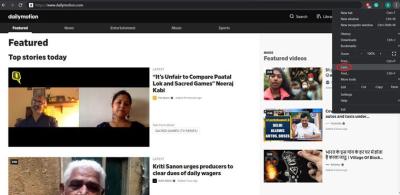Posting articles on LinkedIn is a powerful way to establish authority and showcase your expertise in your field. Unlike standard posts, articles provide a platform for in-depth discussion and allow you to share your thoughts, insights, and knowledge more comprehensively. Whether you’re a seasoned professional or just starting out, understanding the nuances of LinkedIn article posting can elevate your online presence.
The Importance of Showcasing Your Expertise
In today’s digital age, establishing your expertise is more crucial than ever. Here's why you should master the art of showcasing your expertise through LinkedIn articles:
- Build Credibility: When you consistently share valuable insights, you position yourself as a knowledgeable professional in your industry. This credibility can lead to greater trust from peers and potential employers.
- Expand Your Network: Publishing articles often prompts engagement from other users, inviting comments, shares, and connections with individuals who are interested in similar topics.
- Thought Leadership: By sharing well-researched and insightful articles, you can emerge as a thought leader in your field, opening doors for speaking engagements, collaborations, or consulting opportunities.
- SEO Benefits: High-quality articles can enhance your visibility on search engines. When people search for specific topics, your articles might appear, leading to increased traffic to your LinkedIn profile.
- Showcase Your Skills: LinkedIn articles allow you to demonstrate your unique skills, knowledge, and experiences. Potential employers or clients can gauge your capabilities through your writing.
In conclusion, showcasing your expertise through LinkedIn articles is not just about sharing content; it's about crafting a narrative that positions you as an authority in your field. So, are you ready to take the plunge and start writing?
3. Step-by-Step Guide to Posting an Article on LinkedIn
Posting an article on LinkedIn is a fantastic way to showcase your expertise and share valuable insights with your professional network. Don’t worry; it’s easier than you might think! Here’s a step-by-step guide to get you started:
- Log into LinkedIn: Open up your LinkedIn account. If you don’t have one yet, it’s time to create an account – it’s free and straightforward!
- Go to the Home Page: Once you’re logged in, head to your home feed where you’ll see the option to start a post at the top.
- Select ‘Write an article’: Instead of clicking on the text box, look for the option that says ‘Write an article’ below it. This will take you to the LinkedIn publishing platform.
- Use the Title Box: Craft an eye-catching title! This should be engaging and give readers a clear idea of what to expect.
- Add Your Content: In the body, write your article. You can add images, videos, and links to enhance your content. Don’t forget to format your text with headers, bullet points, and bolding to make it easy to read.
- Incorporate Tags: Use relevant tags that describe your article’s theme. This helps people outside your network discover your content.
- Preview Your Article: Always take a moment to preview your article before posting. Look for any typos or formatting issues.
- Hit Publish: Satisfied with your work? Click publish! Your article will now be shared with your LinkedIn connections and, potentially, a broader audience.
And voilà! You've just posted your first article on LinkedIn. Don't hesitate to share it within your network for more visibility.
4. Tips for Writing Engaging Content
Now that you know how to post an article, let’s talk about how to make that content truly engaging. The key is to connect with your audience meaningfully. Here are some tips to ensure your articles draw readers in:
- Know Your Audience: Understand who you’re writing for. Tailor your content to address their interests and challenges.
- Use a Conversational Tone: Write as if you’re having a chat with a friend. This makes your content more relatable and enjoyable to read.
- Start with a Hook: Begin with a compelling statistic, a thought-provoking question, or a personal story. This grabs the reader’s attention right away.
- Be Concise: Keep your paragraphs and sentences short. This helps maintain the reader’s attention and makes your content easier to digest.
- Utilize Subheadings: Break your content into sections with subheadings. This improves readability and helps readers skim through easily.
- Add Visuals: Include images, diagrams, or videos that complement your text. Visuals can enhance understanding and retention of information.
- Encourage Interaction: End with a question or a call-to-action. Encourage your readers to share their thoughts or experiences in the comments.
Crafting engaging content isn’t just about sharing information; it’s about creating a dialogue. When you connect with readers personally, your insights will resonate and leave a lasting impact.
Utilizing Multimedia to Enhance Your Article
When it comes to making your articles on LinkedIn more engaging and informative, incorporating multimedia elements can really do wonders. Imagine reading a plain, text-heavy article versus one that includes vibrant images, videos, or even infographics—there’s no contest, right?
Here are a few ways to enrich your LinkedIn articles with multimedia:
- Images: Use relevant and high-quality images that complement your text. A well-placed image can break up the monotony of text and provide visual context.
- Videos: If you have a video that explains a concept or showcases your expertise, include it! Readers often prefer dynamic content, and videos can convey complex information quickly.
- Infographics: These are fantastic for summarizing data and making statistics more digestible. Infographics can make your article visually appealing while presenting valuable information effectively.
- Presentations: If you have a slide deck that relates to your topic, consider embedding it. Tools like SlideShare can be integrated directly into your LinkedIn article.
Remember, the key here is to ensure that your multimedia content is relevant to your article and enhances the reader's experience. Overdoing it can be distracting; moderation is essential!
Optimizing Your Article for SEO
Search Engine Optimization (SEO) might sound technical, but it’s crucial for making your LinkedIn articles discoverable. You want people to find your content easily, right? Let’s break down some simple yet effective SEO strategies to boost your article’s visibility.
Here are some essential tips to optimize your LinkedIn articles:
- Keyword Research: Identify keywords that are relevant to your industry and the specific topics you’re writing about. Use tools like Google Keyword Planner or Ubersuggest to find those gem keywords.
- Keyword Placement: Naturally incorporate these keywords into your title, headings, and throughout your article. Aim for a keyword density of about 1-2% to keep it organic.
- Engaging Title: Craft a catchy and descriptive title that includes your primary keyword. A good title not only helps with SEO but also grabs attention!
- Meta Descriptions: While LinkedIn doesn't have a traditional meta description, a concise summary at the beginning of your article can serve a similar purpose. It helps clarify what your article is about.
- Internal Links: If applicable, link to other articles of yours. It encourages readers to dig deeper into your content while also improving your SEO through interconnected web pages.
By implementing these strategies, you're setting up your articles for better performance not just on LinkedIn but across search engines too. Who wouldn’t want their expertise to be found far and wide?
7. Promoting Your Article for Maximum Visibility
So, you’ve crafted a stellar article for LinkedIn—now what? Promoting your piece is crucial to ensure it reaches the right audience and garners the attention it deserves. Here are some effective strategies to help your article shine:
- Leverage Your Network: Start by sharing your article with your connections. A simple status update with a catchy caption can entice your network to click and read.
- Utilize Hashtags: Incorporate relevant hashtags to widen your reach. Research trending hashtags in your industry or field to connect with a broader audience. For instance, if you're in marketing, hashtags like #ContentMarketing or #DigitalMarketing can be beneficial.
- Join LinkedIn Groups: Share your article in relevant LinkedIn groups where members would find it valuable. It’s an excellent way to tap into a community of like-minded individuals.
- Cross-Promotion: Don’t hesitate to promote your article on other social media platforms like Twitter, Facebook, or Instagram. Tailor your message to fit each platform’s audience.
- Engage with Other Articles: Comment on posts or articles in your field. If you leave insightful comments, people may check out your profile and, in turn, your article.
Ultimately, the key to effective promotion lies in being strategic. Think of creative ways to present your content that aligns with where your audience hangs out online. Happy promoting!
8. Engaging with Your Audience After Posting
Once your article is live on LinkedIn, your job isn’t over. Engaging with your audience keeps the conversation going and fosters a sense of community around your expertise. Here’s how to do it:
- Respond to Comments: When readers take the time to comment, they are inviting dialogue. Make sure to reply promptly and thoughtfully. It shows you value their input and encourages further discussion.
- Acknowledge Shares: If someone shares your article, thank them! A simple acknowledgment builds goodwill and can lead to deeper connections.
- Ask Questions: Prompt readers to share their opinions or experiences related to your topic. For example, “What are your thoughts on this approach?” This can encourage more engagement and interaction.
- Share Related Content: After a while, consider sharing additional articles or resources that complement your original piece. This not only adds value to your audience but keeps them coming back for more.
- Monitor Performance: Keep an eye on how your article performs over time. Use LinkedIn’s analytics tools to track engagement. Understanding what resonates can guide your future posts.
Engagement is a two-way street. Foster relationships, create conversations, and your audience will appreciate your insights even more!
9. Measuring the Impact of Your Article
When you've put in the effort to write and post an article on LinkedIn, it's natural to want to see how it's making waves. Measuring the impact of your article isn't just about checking the number of views; it's about understanding how it resonates with your audience and how well it reflects your expertise. Let’s break down some effective ways to track your article’s performance.
- Views and Read Rates: Start by checking the number of views your article has received. LinkedIn provides analytics that can show you how many people have viewed your content. A higher read rate indicates that your topic captures attention.
- Engagement Metrics: Look at the likes, comments, and shares your article generates. These engagements signal that your readers found value in what you wrote. Keep an eye on which articles receive the most interaction to tailor future content to your audience's interests.
- Profile Visits: After posting your article, check if there's a spike in profile visits. If more people are curious about you after reading your work, it could indicate they see you as a thought leader in your field.
- Connection Requests: Observe if there's an increase in new connection requests. Engaging articles can attract like-minded professionals who want to network with you.
- Feedback and Comments: Engage with your readers by responding to comments. Direct feedback can provide insights into what readers appreciate or want to see next.
By analyzing these metrics, you can refine your writing strategy to enhance your visibility and engagement on LinkedIn. Ultimately, measuring impact helps you grow and adjust to better serve your audience.
10. Conclusion: Building Your Personal Brand on LinkedIn
As we wrap up the discussion on mastering article posting on LinkedIn, it's important to recognize that each piece you publish plays a crucial role in building your personal brand. Your articles showcase your expertise and establish you as a credible voice in your industry. Here’s a quick look at why investing in your LinkedIn presence is essential:
- Accessibility: Articles make your knowledge easily accessible to your network and potential connections, increasing your reach.
- Relationship Building: Sharing valuable insights fosters relationships with your audience. Engagement nurtures a sense of community.
- Career Opportunities: A well-crafted article can catch the eyes of recruiters and industry leaders, opening doors to new opportunities.
- Consistency is Key: Regularly posting articles not only keeps you relevant but also shows your commitment to your field.
As you continue to share your insights and experiences, remember that authenticity shines through. Be yourself and speak openly about your passions and expertise. The more genuine you are, the more people will connect with you. So, go ahead, and start crafting those articles, because every word you share contributes to shaping your professional narrative on LinkedIn!










